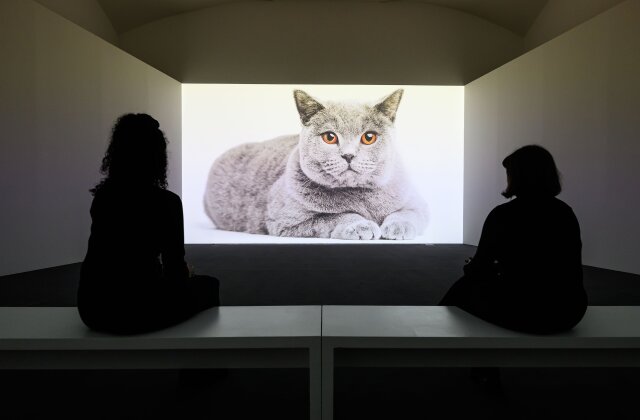[ad_1]
The early days of telemedicine to deal with mostly mild illnesses like sinus infections or pink eye are fast coming to an end.
According to Dr. Roy Schoenberg, the frontier includes connecting patients with their regular doctors more regularly and using artificial intelligence to monitor their health.
He’s watching it grow as co-CEO of Amwell, a Boston-based company that provides telemedicine software and technology for health systems and insurers. The company works with more than 55 health plans and health systems representing more than 2,000 hospitals.
Schoenberg recently spoke with The Associated Press. The conversation has been edited for clarity and length.
Question: The COVID-19 pandemic pushed people toward telemedicine. Did this cause any lasting changes in care delivery?
pictures you should see

Answer: In a very profound way. We are just beginning to understand how profound the impact is. When people started buying books on Amazon, they didn’t notice that they were starting to embrace online retail. We’re going through the same thing with telehealth. People have opened the door to receiving care through technology.
Q: What care do some patients want in person now and do you expect will become largely virtual in the future?
Answer: The early generations of telehealth were really about convenience…how a patient could quickly get a simple prescription or address a sick child’s problem. The revolution that is going on right now is that people are starting to use these technologies to interact with their regular caregivers. These are regularly scheduled appointments. Patients with very difficult conditions, such as cancer and serious chronic conditions, are becoming frequent telehealth travelers. Its development will continue.
Q: How does your technology make the greatest use of artificial intelligence?
Answer: AI is not in a position to replace physicians. However, these technologies can help in routine examination of a patient. If you have a patient who has been discharged from the hospital or has a chronic illness at home… we can check in every day to see how they are doing. If the patient is not doing well, (the technology) will have the ability to take that patient directly to the (nurse or doctor). You get a text message that starts a conversation. This switches to a secure platform, which is essentially an application on your phone.
Q: You are co-CEO with your brother Ido. How do you handle disagreements?
Answer: Ido focuses on business creation. My heart is on developing technologies that solve big problems in care. We respect the fact that each of us has our own special skills. When disagreements arise… the one making the right decision is the person who is actually skilled in that area. We have been doing this for 30 years.
The Associated Press Health and Science Department receives support from the Howard Hughes Medical Institute’s Science and Educational Media Group. AP is solely responsible for all content.
Copyright 2024 The associated Press, All rights reserved. This material may not be published, broadcast, rewritten, or redistributed.
[ad_2]
Source link
